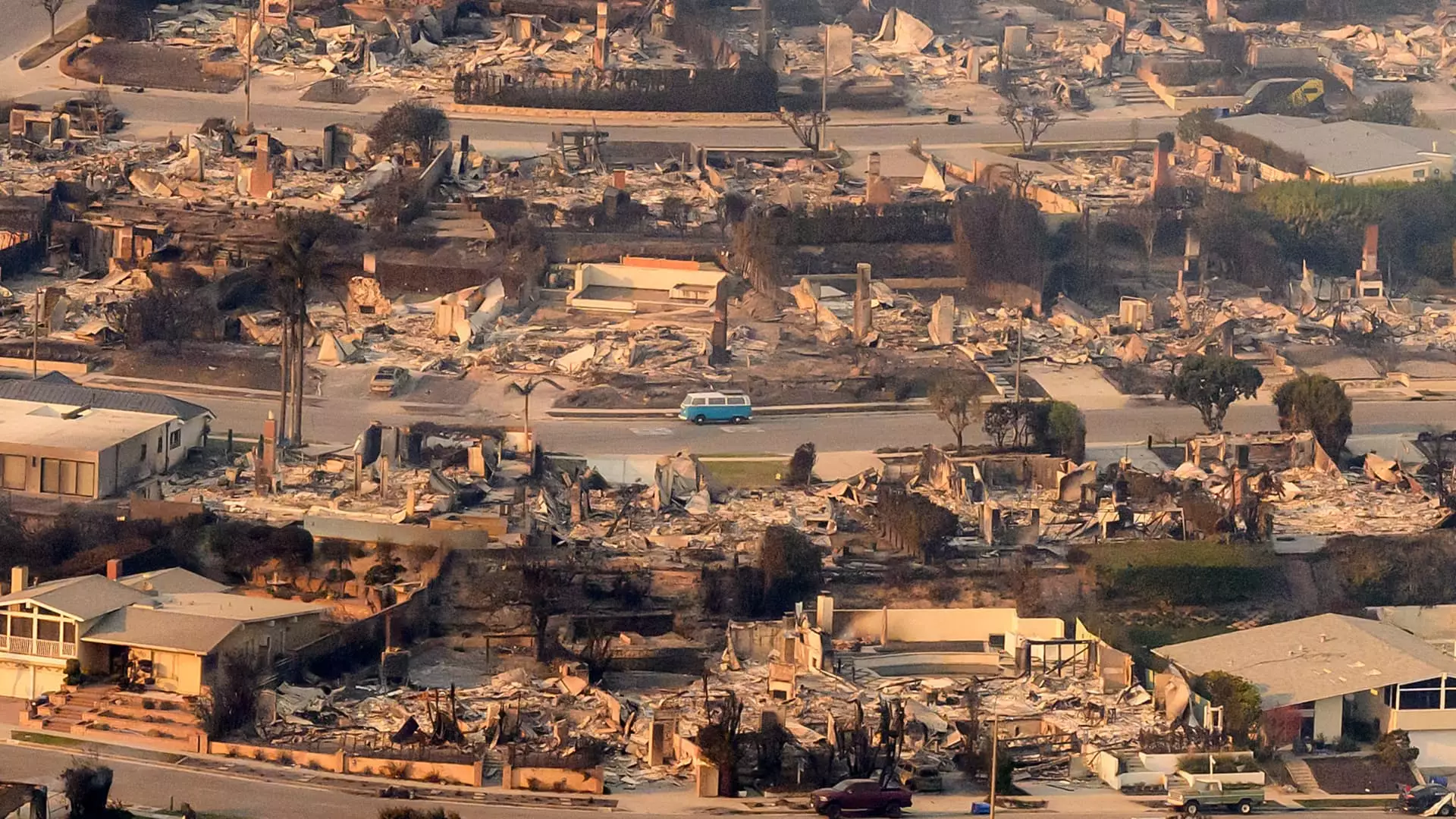The recent wildfires in Los Angeles have sent shockwaves through the insurance sector, with companies holding substantial stakes in California’s homeowners’ market facing significant stock declines. On a particularly bleak Friday, shares of major insurers like Allstate and Chubb plummeted by 4%, while AIG and Travelers saw their stock values drop by about 2%. This performance highlights the volatility and risk associated with underwriting in regions prone to catastrophic events. The fallout from these wildfires could lead to unprecedented insured losses, with forecasts indicating that the impact might exceed $20 billion, far outstripping previous records.
Understanding the Scale of Insured Losses
JPMorgan has flagged the current blazes, particularly noting that companies such as Allstate, Chubb, and Travelers represent the heaviest exposers to the insured losses incurred from this calamity. The Wall Street giant warns that Chubb, known for catering to high-net-worth individuals, could experience elevated levels of loss due to the affluence of the clientele in affected areas. This suggests that the concentration of expensive properties could exacerbate the financial ramifications for insurers. Historically, the 2018 Camp Fire incurred insured losses of $12.5 billion, and any further escalation from the ongoing wildfires could redefine the benchmarks for California’s costly fire incidents.
The Palisades Fire has emerged as the largest of the several ongoing blazes, incinerating more than 17,000 acres and causing extensive damage to over 1,000 structures. This is particularly concerning given that areas like Pacific Palisades have median home prices surpassing $3 million. Such high property values contribute to the staggering insured loss estimates, thereby amplifying the impact on both homeowners and insurance companies. This incident underscores the growing concern of climate change and its potential influence on property insurance models, as insurers grapple with the realities of increasing frequency and severity of wildfires.
In light of these events, insurance companies are calling on utility providers, like Southern California Edison, to preserve crucial evidence related to the fires. This strategy may help in determining liability and possibly guide future insurer responses. Furthermore, the rise in estimated losses raises concerns about the reinsurance markets as well. With companies like Arch Capital Group and RenaissanceRe Holdings experiencing declines of 2% and 1.5%, respectively, the potential breach of reinsurance agreements indicates a looming crisis for these firms.
The implications of the Los Angeles wildfires extend beyond immediate property damage—they pose a significant threat to the financial stability of the insurance sector. As insurers brace for what could be the most extensive insured losses in California’s history, the ongoing evaluation of risk management and underwriting strategies will be crucial. The insurance industry must adapt to an evolving landscape characterized by increasing natural disasters, potentially leading to higher premiums, stricter underwriting criteria, and a reevaluation of coverage terms to safeguard against future financial fallout.

